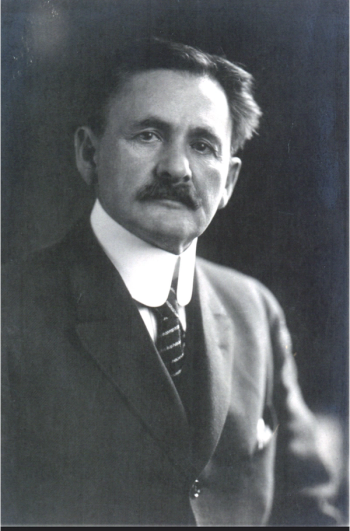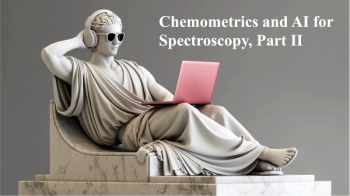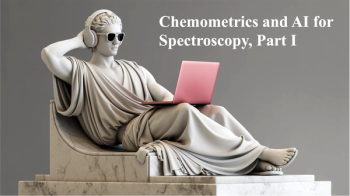
- Spectroscopy-02-01-2016
- Volume 31
- Issue 2
Investigating Crystallinity Using Low Frequency Raman Spectroscopy: Applications in Pharmaceutical Analysis
Crystallinity is an important factor when producing pharmaceuticals as it directly affects the bioavailability of the drug. Low frequency Raman spectroscopy offers some advantages to the detection and analysis of crystallinity in pharmaceutical samples. Here the experimental requirements for low frequency Raman measurements are described. The application to the study of crystallinity with a number of examples is discussed and the advantages and limitations of this technique are highlighted and compared with other techniques.
Crystallinity is an important factor when producing pharmaceuticals because it directly affects the bioavailability of the drug. Low-frequency Raman spectroscopy offers some advantages to the detection and analysis of crystallinity in pharmaceutical samples. Here the experimental requirements for low-frequency Raman measurements are described. The application of the technique to the study of crystallinity with a number of examples is discussed and the advantages and limitations are highlighted and compared with other techniques.
Raman spectroscopy is typically a nondestructive technique that uses lasers to probe for information about intra- and intermolecular bond vibrations. It involves irradiating the sample with monochromatic light to excite molecules within the sample to a virtually excited state. The molecules then relax to a higher (Stokes scattering) or lower (anti-Stokes scattering) vibrational level-resulting in the scattered light being lower or higher in frequency than the irradiating photons, respectively. Raman scattering is produced when this inelastic scattering occurs, and can be used to deduce information about the nature of the sample. Relative to the incident light, Raman scattering is a rare phenomenon, occurring in only 10-6 of the irradiated molecules (1). What occurs more commonly is elastic scattering, Rayleigh scattering, where the light emitted from the sample has the same energy as the incident light. The intensity of Raman scattering is determined by whether the vibrational mode of the molecule has a change in polarizability along its normal coordinate-similar to how infrared (IR) spectroscopy requires a changing dipole moment (1). For example, H2O has vibrational modes that have large dipole moment changes along the normal coordinate and as such it has strong IR bands. However, as H2O is an σ-bonded compound, the electrons have low polarizability and the change in polarizability with vibration is also low, hence the Raman scattering is weak. Conversely, the active pharmaceutical ingredients (APIs) in many drugs are generally π-bonded and easily polarizable, thus producing strong features in Raman spectra (2). This is one of the reasons why Raman spectroscopy is actively used in pharmaceutical studies.
Crystallinity and Why It Is Important for Pharmaceuticals
The term crystalline is used to describe solids in which the atoms or molecules are arranged in an ordered manner. For many pharmaceuticals, the crystalline form is more kinetically stable than the amorphous form, which typically results in crystalline solids being less soluble, and therefore less bioavailable than their amorphous counterparts. The influence that crystallinity has over the solubility of a solid is what makes this an important factor when manufacturing pharmaceuticals, as those which are supposed to be fast-acting should be readily soluble in the body, while slow-acting drugs should dissolve relatively slowly. This has been shown to be the case in previous studies of bioavailability of APIs in the literature (3–5). Because of this, it is important to be able to control the crystallinity of a drug and monitor it. However, the crystallinity of a sample cannot be assumed to be simply either 100% ordered or 100% amorphous. Instead, the literature has indicated that disorder occurs along a continuous scale where a sample can gradually become more or less crystalline before becoming fully ordered or disordered (6). Crystallinity can be controlled in a number of different ways. One such method involves creating a fully crystalline pharmaceutical product and introducing disorder into the structure mechanically by milling the sample (4,5). Previous studies have also shown that amorphous pharmaceuticals can be produced through different drying methods (7,8). Even accidental adjustment of properties such as moisture level can lead to a change in crystallinity (9,10). Methods to monitor the crystallinity of a sample are therefore useful.
Established methods for monitoring crystallinity include calorimetry and X-ray diffraction (XRD) (6). Terahertz spectroscopy is arguably a more recently implemented method of analysis of crystallinity and is the only one of these three techniques described in any detail here. The first terahertz technique described is terahertz absorption spectroscopy or far-IR spectroscopy. The terahertz radiation has a wavelength that is between that of IR and microwaves (0.1–1 mm or 10–100 cm-1) and has the ability to allow observation of various low energy vibrations within the sample (11–13). Vibrations can essentially be divided into two categories when studying crystalline samples: external and internal vibrational modes. Internal vibrations can be considered the local vibrations that occur within each molecule (that is, intramolecular bond vibrations). External vibrations can be considered the vibrations involving the overall lattice of the crystal, such as phonon modes or torsional vibrations (14,15). Terahertz spectroscopy tends to focus on the external vibrations. The technique has been known for more than 100 years, and two experimental challenges have inhibited its widespread use. The first of these is the presence of strong water absorption above 60 cm-1, which has complicated analysis of wet samples (16) and the second is the presence of ambient terahertz radiation that compromises spectral detection (17). The second of these issues has been solved in large part with the advent of terahertz time-domain spectroscopy, also known as terahertz pulsed spectroscopy (TPS), which generates terahertz radiation using femtosecond laser pulses, using a laser wavelength of around 780 nm. For more in-depth detail about terahertz spectroscopy, refer to references 11–13. Despite its relative underutilization, this technique has been found to be an effective method for observing and even quantifying crystallinity in various papers in the literature. Model compounds such as cellulose and gelatin–amino acid mixtures have been used previously to determine the efficacy of the technique when compared to XRD (18) or to determine whether it would be an efficient method for in-line and off-line analysis of pharmaceutical crystallinity (19). In particular, the use of terahertz spectroscopy with a multivariate analysis technique-partial least squares (PLS)-permitted the quantification of the crystallinity index (CI) of cellulose (18). However, not only has the crystallinity of model systems been analyzed using the technique, drugs such as indomethacin, ketoprofen, carbamazepine, enalapril maleate, fenoprofin, irbesartan, and diclofenac acid have also been studied (11,19–23). The use of PLS also proved effective when working with pharmaceutical products, allowing not only real formulations to be distinguished from one another, but also the different crystalline forms to be distinguished. These forms were indicated by Strachan and colleagues to include polymorphic, liquid crystalline, and amorphous states (11,24). Therefore, terahertz spectroscopy has seen growing interest based on its success with the study of pharmaceuticals. Other reviews have also come to compare terahertz spectroscopy with other forms of vibrational spectroscopy for pharmaceutical analysis (25,26).
Articles in this issue
almost 10 years ago
Statistics, Part II: Second Foundationalmost 10 years ago
Raman Mapping of Spectrally Non-Well-Behaved Speciesalmost 10 years ago
Professor Joseph Caruso: In Memoriamalmost 10 years ago
FT-IR for Cancer Diagnosisalmost 10 years ago
Metabolomics in Food and Nutrition Laboratoriesalmost 10 years ago
Detecting Adulterated Meat with LIBSalmost 10 years ago
Advances in ICP-MS Detection of Selenium in Proteinsalmost 10 years ago
Vol 31 No 2 Spectroscopy February 2016 Regular Issue PDFNewsletter
Get essential updates on the latest spectroscopy technologies, regulatory standards, and best practices—subscribe today to Spectroscopy.





